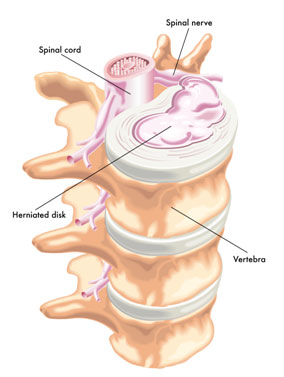
What is Sciatica?
Sciatica is pain that is felt in the back of the thigh and the leg as a result of irritation of nerves in the lower back. Typically pain starts in the lower back, and radiates into the buttock, hip and down the leg in a particular shooting pattern.

The pain is usually a sharp pain and is often associated with tingling, burning, numbness or weakness in the leg.
Who suffers from Sciatica?
People with sciatica are usually aged 30 to 50 years. People that participate in physically demanding jobs consistently report higher rates of sciatica compared with people in the general population.
What causes Sciatica?
Irritation of the sciatic nerve is due to inflammation or compression of the lumbar or sacral nerves as they exit the spinal canal in the lower back. These nerves join together to make up the sciatic nerve at the end of the spinal column.
In the vast majority of cases the irritation is due to a spinal disc herniation with nerve root compression, however lumbar canal or foraminal stenosis are also possible causes. Direct irritation of the sciatic nerve is also caused by nerve entrapment through the piriformis muscle in 15% of the population. Tumours or cysts may also cause sciatica pain, however this is very rare.
How long does it last for?
Most pain and related symptoms resolve within the first 2 weeks and in more serious causes 80% of patients will recover within 8 weeks.
Do I have Sciatica?
- Some of the signs and symptoms include:
- Sharp pain radiating down the leg
- Pain with prolonged sitting/standing
- Pain with sneezing, coughing, laughing
- Weakness in the leg/foot of affected side
How can a PPS Physiotherapist help?
Our PPS Physiotherapist can help to correctly diagnose if you have sciatica by taking a thorough history and physical examination. If appropriate, your physiotherapist will decide if referral for an X-ray, CT or MRI scan is necessary.
Once the diagnosis of sciatica has been made, your physiotherapist will identify and treat any possible contributing factors to your pain.
These factors include:
- Poor lumbo-pelvic motor control
- Poor sitting/standing postures
- Muscle tightness or weakness
- Neural tightness
- Joint stiffness
- Disc bulge/herniations





